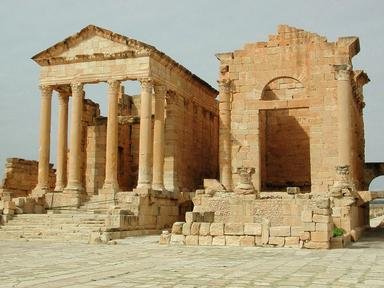Quiz Answer Key and Fun Facts
1. This is a representation of the flag of the Mamluk Sultanate as described by the "Catalan Atlas". The flag uses the same golden color as the Ayyubid dynasty who ruled over large parts of Egypt and the Levant immediately before the Mamluks. The Mamluk flag also carries the crescent; what religion would this suggest the Sultanate followed?
2. Pictured here is a typical Mamluk. They were technically slaves imported from Central Asia to serve as soldiers and administrators. This system allowed the infighting factions of Egypt to maintain professional hired armies that had no local loyalties. Because of their status, what does the word "Mamluk" mean?
3. The foreigner slaves were able to establish their own sultanate through intrigue, murder, and military power under the Mamluk Ayberg. But this was only after King Louis IX of what country destabilized the Ayyubids by partaking in his own personal nation's crusade of the Holy Lands in 1249?
4. Here are the Mamluk Sultanate's lands in the thirteenth century. They were the protector of the holy cities of Mecca and Medina from invaders and the guardian of pilgrims. These cities were located in what region (colored in red) which counted the Mamluks as their suzerain?
5. In this painting by January Suchodolski, you can see an image of a Mamluk training. The Mamluks were widely considered competent and trusted leaders. Much like a code of chivalry, they lived by their own code known as "Furusiyya", made up by three different words meaning the "science, art, and literature" of what important Mamluk arena?
6. This 14th-century illustration depicts Mamluk cavalry and Mongol mounted archers. The Mamluks had been skirmishing with the Ilkhanate, a word meaning "subordinate khanate", ruled by Hulagu Khan. Baibars, a Mamluk military commander, met the Ilkhanate's forces at the Battle of Ain Jalut in southeastern Galilee. What is significant about this battle?
7. Mamluk general Baibars was a strong, authoritative leader who defeated both European Crusaders as well as Mongol mounted archers on the battlefield. He became sultan after the death of the previous sultan, Qutuz, who Baibars was said to have helped murder. Baibars also has another legacy: he took control of an order of Nizari Ismailis known as the "Hashashin" and began a campaign of the murder of his enemies. In this 14th-century painting, you can see the Hashashin murdering Nizam al-Mulk. What word finds its etymology traced back to these killers?
8. Mamluk architecture and art followed the traditions of the Bahri Mamluks, and though the Burji Mamluks took power in 1382, they continued to build and craft in the Bahri style. Mamluk sultans preferred to build many smaller mosques and religious buildings as opposed to large projects. Here we see the Mosque of Sultan Hassan (an unimportant sultan) which was built in what Mamluk capital city?
9. The Mamluk Sultanate held its own for nearly three hundred years, but there were several factors that led to its decline: the bubonic plague, scattered invasions from the Middle East, Portugal's intrusion into Eastern trade routes. However, it was their lack of military technology that led to their ultimate demise. Shown in the image, Sultan Selim I of what empire gained control of all of their lands after only two major battles?
10. The Mamluks were still an authority within Egypt for many centuries, even though they were occupied and ruled by foreign nations. In 1798, the forces of Napoleon invaded Egypt and were trying to defeat the local Mamluk rulers. This painting by Francois-Louis-Joseph Watteau depicts which battle, which Napoleon was said to have named himself?
Source: Author
trident
This quiz was reviewed by FunTrivia editor
bloomsby before going online.
Any errors found in FunTrivia content are routinely corrected through our feedback system.
